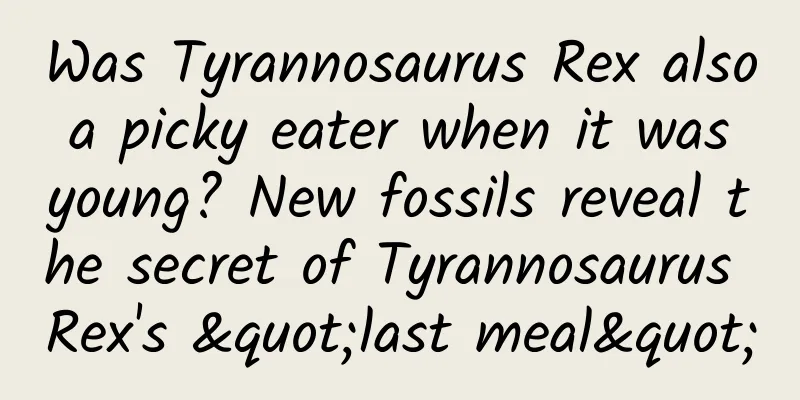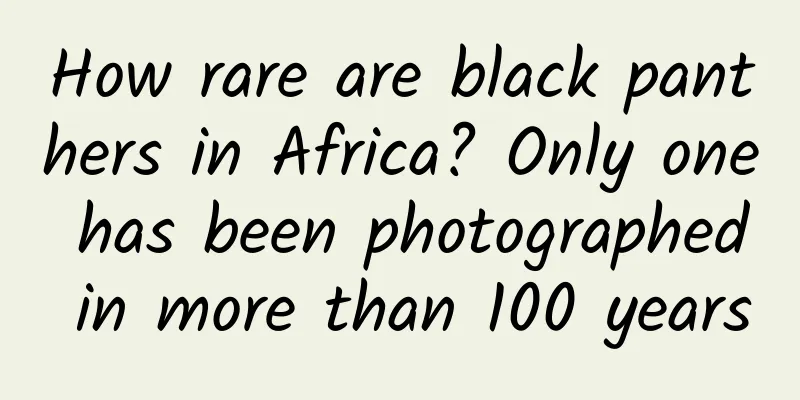Was Tyrannosaurus Rex also a picky eater when it was young? New fossils reveal the secret of Tyrannosaurus Rex's "last meal"

|
Adult Tyrannosaurus rex was a formidable predator with powerful jaws and extremely penetrating teeth that could kill giant herbivores larger than itself. However, paleontologists recently discovered that the young Tyrannosaurus rex ate different prey, and the prey was much smaller. The relevant research was published in Science Advances on December 8. About 77 million years ago, in what is now Alberta, Canada, Gorgonosaurus (a type of Tyrannosaurus Rex) was the "king of the land." They were as heavy as a white rhino and as long as 30 feet from teeth to the tip of the tail. Source: Tuchong Creative Based on fossilized feces and gnawed bones, scientists know that adult Tyrannosaurus rex used their bone-crushing teeth to eat large herbivorous dinosaurs the size of African elephants, such as Triceratops and Hadrosaurs. However, what juvenile Tyrannosaurus rex ate has been a matter of debate, as their skulls and teeth were not as sturdy as those of adults. In the new study, dinosaur paleontologist Darla Zelenitsky of the University of Calgary in Canada and her colleagues describe a new fossil of a juvenile Gorgosaur found in Dinosaur Provincial Park in Alberta, Canada, one of the richest deposits of dinosaur fossils in the world. The young dinosaur was about 5 to 7 years old, about 15 feet long and weighed about 1,000 pounds, about the weight of a large domestic pig and about 10 times the weight of its parents. Juvenile dinosaur fossils are very rare in the region because rivers that run through the region's floodplains tend to break up the smaller, more fragile bones of young dinosaurs after they die, Zelenitsky said. Even more rare, the juvenile skeleton contained the remains of two smaller dinosaurs that the T. rex preyed on. The two smaller dinosaurs were less than a year old and weighed about the same as a modern turkey. "This is the first direct evidence that a T. rex juvenile was eating smaller, younger dinosaurs," Zelenitsky said. She added that an adult T. rex probably wouldn't have eaten the small animals because they wouldn't have provided many calories. The fossils show that the young Tyrannosaurus Rex also seemed to be very picky when it came to eating, as it only ate the two hind legs of each prey, which were the fattiest parts. "This is the last meal of T. rex, preserved in a fossil!" said Steve Brusatte, a paleontologist at the University of Edinburgh in the United Kingdom and one of the study authors. "This is direct evidence of what T. rex ate, not just speculation." "It's a surprising finding, and while it's based on just one individual, which isn't ideal for ecological inferences, the interpretation is quite plausible," said Felisa Smith, a paleoecologist at the University of New Mexico, who was not involved in the study. She also thinks that based on the similar tooth wear between juvenile and adult Tyrannosaurus, adults may have fed larger prey to their young. |
>>: How many minutes should you boil eggs to make them tasty? This experiment will tell you!
Recommend
Guided by the "hot product methodology", iCAR's brand upgrade is "quite interesting"
Today's new energy vehicle sector seems to be...
Why is the sound of the piano so beautiful? It’s inseparable from these four major instruments!
When it comes to the piano, many students who hav...
Why can't you stick your smartwatch on the glass of a high-speed train? Because you might not be able to take it off...
Produced by: Science Popularization China Author:...
Hollywood actress' Tesla car caught fire, electric car battery safety questioned again
On Friday, June 16th, US time, McCormack, an Amer...
Super data recovery money-making project, easily earn 10,000+ per month (with tutorial data recovery software cracked version collection)
I believe everyone has the experience of accident...
Foreign practical information! 6 methods to help you design an excellent APP
Many people are full of praise for Parable's ...
3000 words to understand Weibo operation and promotion routines!
Why do I operate Weibo? Because browsing Weibo is...
Can viruses be used to treat diseases? Phage therapy - defeating magic with magic!
Author: Zhao Bei In our impression, viruses are o...
Three days after the release of Black Myth: Wukong, the first batch of "cyber lovelorn" patients appeared...
On August 20, China's first 3A game "Bla...
Xia Qijiang's "16 Zero-Based Watercolor Painting Video Courses"
【Lecturer Introduction】 Xia Qijiang, a well-known...
Are Chinese chip manufacturers being strangled by Japanese suppliers for commercial or political purposes?
Recently, Japanese wafer giant Sumco decided to c...
Content operation monthly salary from 3,000 to 30,000, just 5 steps!
As a content editor of a product, you will focus ...
Learn to avoid these words, and you will be a master at choosing yogurt
The "yogurt" you often buy may be fake ...
Compared with Android 5.0, the surprising changes in Android M
We've got our hands on every Android M demo r...
Android game development tools upgraded
Different hardware manufacturers have brought dev...









